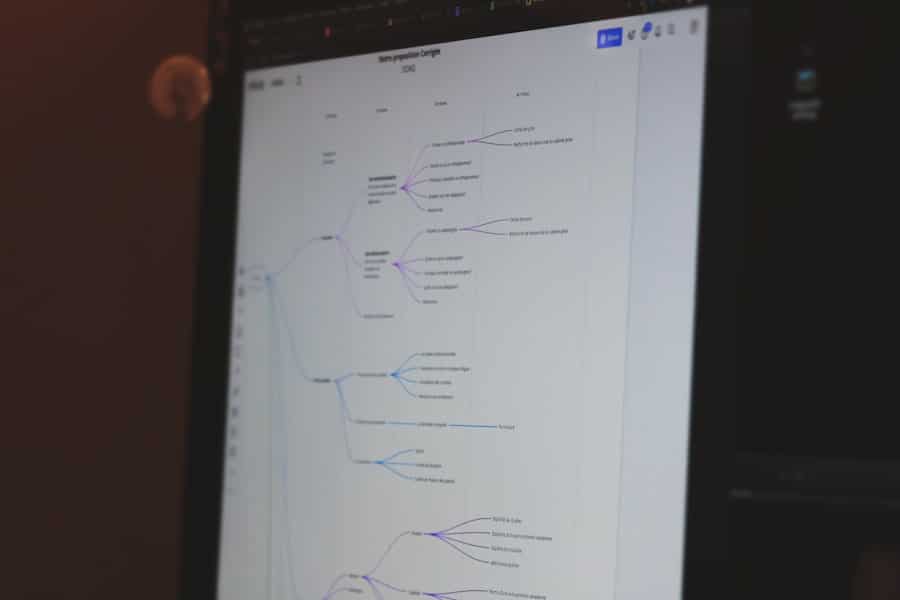The emergence of neobanks has significantly transformed the financial landscape, particularly in the realm of personal banking. Unlike traditional banks, which often rely on physical branches and legacy systems, neobanks operate entirely online, leveraging technology to provide a seamless banking experience. This shift has been driven by a combination of factors, including changing consumer preferences, advancements in technology, and the increasing demand for more accessible financial services.
Neobanks appeal to a tech-savvy demographic that values convenience, speed, and user-friendly interfaces. As a result, they have gained traction among millennials and Generation Z, who are more inclined to manage their finances through mobile applications rather than visiting brick-and-mortar locations. The rise of neobanks can also be attributed to the growing dissatisfaction with traditional banking institutions.
Many consumers have expressed frustration over hidden fees, slow customer service, and outdated technology. Neobanks have capitalized on these pain points by offering transparent pricing models, instant account setup, and innovative features such as budgeting tools and real-time transaction notifications. This customer-centric approach has allowed neobanks to carve out a niche in the competitive financial services market.
As they continue to innovate and expand their offerings, neobanks are not only attracting new customers but also challenging established banks to rethink their strategies and adapt to the evolving needs of consumers.
Key Takeaways
- Neobanks are on the rise, offering digital-only banking services without physical branches.
- Automation plays a crucial role in neobanks, streamlining processes and providing personalized customer service.
- Automation allows neobanks to offer personalized customer service through chatbots and AI-driven solutions.
- Neobanks use automation to streamline processes, such as account opening, loan approvals, and transaction monitoring.
- Neobanks provide 24/7 accessibility and support to customers, leveraging automation for round-the-clock service.
Understanding Automation in Neobanks
Automation is at the heart of neobanking, enabling these digital-first institutions to operate efficiently while providing enhanced services to their customers. By utilizing advanced technologies such as artificial intelligence (AI), machine learning, and robotic process automation (RPA), neobanks can streamline various banking processes that were traditionally manual and time-consuming. This technological backbone allows for quicker transaction processing, reduced operational costs, and improved accuracy in data handling.
Moreover, automation in neobanks extends beyond mere operational efficiency; it also plays a crucial role in enhancing the overall customer experience. Automated chatbots and virtual assistants are increasingly being deployed to handle customer inquiries, providing instant responses to common questions and issues.
This not only frees up human agents to focus on more complex queries but also ensures that customers receive timely assistance whenever they need it. The integration of automation into customer service processes exemplifies how neobanks are leveraging technology to create a more responsive and user-friendly banking environment.
Personalized Customer Service through Automation

One of the most compelling advantages of automation in neobanks is its ability to facilitate personalized customer service. By harnessing data analytics and AI algorithms, neobanks can tailor their offerings to meet the unique needs of individual customers. For example, automated systems can analyze a customer’s spending habits and financial behavior to provide personalized budgeting advice or suggest relevant financial products.
This level of customization not only enhances customer satisfaction but also fosters loyalty, as clients feel understood and valued by their banking provider. Furthermore, automated communication channels allow neobanks to engage with customers on a more personal level. Through targeted messaging and personalized notifications, neobanks can inform customers about new features or promotions that align with their interests.
For instance, if a customer frequently travels abroad, the bank might send alerts about favorable currency exchange rates or travel-related financial products. This proactive approach not only improves the customer experience but also positions neobanks as trusted financial partners that are attuned to their clients’ needs.
Streamlining Processes with Automation
The operational efficiency achieved through automation is one of the defining characteristics of neobanks. Traditional banks often grapple with cumbersome processes that can lead to delays and customer dissatisfaction. In contrast, neobanks utilize automation to streamline various functions such as account opening, loan approvals, and transaction processing.
For instance, many neobanks offer instant account setup through mobile applications, allowing users to complete the onboarding process within minutes rather than days. This rapid turnaround is made possible by automated identity verification systems that utilize biometric data or document scanning technology. Additionally, automation plays a pivotal role in risk management and compliance within neobanks.
Regulatory requirements in the financial sector can be complex and ever-changing; however, automated systems can continuously monitor transactions for suspicious activity and ensure compliance with relevant regulations. This not only mitigates risks associated with fraud but also reduces the burden on human compliance teams who would otherwise need to manually review transactions. By automating these processes, neobanks can maintain a high level of security while focusing on delivering exceptional service to their customers.
24/7 Accessibility and Support
One of the hallmark features of neobanks is their commitment to providing 24/7 accessibility and support for their customers. Unlike traditional banks that operate within specific hours and may require customers to visit physical branches for assistance, neobanks leverage technology to ensure that help is always available at any time of day or night. Automated chatbots are often employed to handle customer inquiries outside of regular business hours, providing immediate responses to common questions about account balances, transaction history, or payment processing.
This round-the-clock availability is particularly appealing in today’s fast-paced world where consumers expect instant gratification. Whether it’s a late-night question about a recent transaction or an urgent need for assistance while traveling abroad, neobank customers can rely on automated support systems to address their concerns promptly. Furthermore, this level of accessibility enhances customer satisfaction by eliminating the frustration often associated with waiting for assistance during traditional banking hours.
Data-Driven Customer Insights

Neobanks are uniquely positioned to harness vast amounts of data generated through customer interactions and transactions. By employing advanced analytics tools, these digital banks can gain valuable insights into customer behavior and preferences. This data-driven approach enables neobanks to refine their product offerings and marketing strategies based on real-time feedback from users.
For instance, if data reveals that a significant number of customers are interested in savings accounts with higher interest rates, a neobank can quickly adapt its offerings to meet this demand. Moreover, data analytics allows neobanks to identify trends and patterns that may not be immediately apparent through traditional methods. By analyzing transaction data over time, neobanks can uncover insights related to spending habits, seasonal fluctuations in consumer behavior, or emerging financial needs among specific demographics.
This information not only informs product development but also enhances customer engagement strategies by allowing neobanks to deliver targeted promotions or educational content that resonates with their audience.
Challenges and Limitations of Automation in Neobanks
Despite the numerous advantages that automation brings to neobanks, there are inherent challenges and limitations that must be addressed. One significant concern is the potential for over-reliance on automated systems at the expense of human interaction. While chatbots and automated responses can efficiently handle routine inquiries, they may fall short when it comes to addressing complex issues or providing empathetic support during sensitive situations.
Customers may feel frustrated if they are unable to connect with a human representative when needed, leading to dissatisfaction with the overall service experience. Additionally, there are concerns regarding data privacy and security in an increasingly automated banking environment. As neobanks collect vast amounts of personal information from their users, they must ensure robust security measures are in place to protect this data from breaches or unauthorized access.
The reliance on algorithms for decision-making also raises ethical questions about bias in automated systems; if not carefully monitored, these algorithms could inadvertently perpetuate existing inequalities or lead to unfair treatment of certain customer segments.
The Future of Customer Service in Neobanks
Looking ahead, the future of customer service in neobanks is likely to be shaped by continued advancements in technology and evolving consumer expectations. As artificial intelligence becomes more sophisticated, we can expect even greater levels of personalization in customer interactions. Future iterations of chatbots may incorporate natural language processing capabilities that allow for more nuanced conversations with customers, making interactions feel more human-like and less transactional.
Moreover, as consumers become increasingly aware of data privacy issues, neobanks will need to prioritize transparency in how they collect and use customer information. Building trust will be essential for maintaining customer loyalty in an era where data breaches are all too common. Neobanks that successfully navigate these challenges while continuing to innovate will likely emerge as leaders in the financial services industry.
In conclusion, the rise of neobanks has ushered in a new era of banking characterized by automation and enhanced customer service capabilities. As these digital-first institutions continue to evolve, they will play a pivotal role in shaping the future of financial services by prioritizing efficiency, personalization, and accessibility for their customers.
In a related article, Best Software for NDIS Providers: A Comprehensive Guide, the focus shifts to the importance of choosing the right software for NDIS providers to streamline their services and improve customer satisfaction. Just like how neobanks are redefining customer service through automation, NDIS providers can also benefit from utilizing the right technology to enhance their operations and provide better support to their clients. Both articles highlight the significance of leveraging technology to improve customer service and overall efficiency in different industries.
FAQs
What are neobanks?
Neobanks are digital-only banks that operate exclusively online, without any physical branches. They offer banking services such as savings accounts, checking accounts, and loans through mobile apps and websites.
How do neobanks redefine customer service through automation?
Neobanks use automation to streamline and enhance the customer service experience. They leverage technology such as chatbots, AI-powered customer support, and self-service tools to provide quick, efficient, and personalized assistance to their customers.
What are the benefits of neobanks’ automated customer service?
Automated customer service allows neobanks to offer 24/7 support, faster response times, and lower operational costs. It also enables them to gather and analyze customer data to deliver more personalized and targeted services.
What are some examples of automation in neobanks’ customer service?
Examples of automation in neobanks’ customer service include chatbots that can answer frequently asked questions, automated transaction categorization, instant account notifications, and AI-powered financial advice and insights.
Are there any drawbacks to neobanks’ automated customer service?
While automation can improve efficiency, some customers may still prefer human interaction for complex or sensitive issues. Neobanks need to strike a balance between automation and human support to ensure a positive customer experience.

